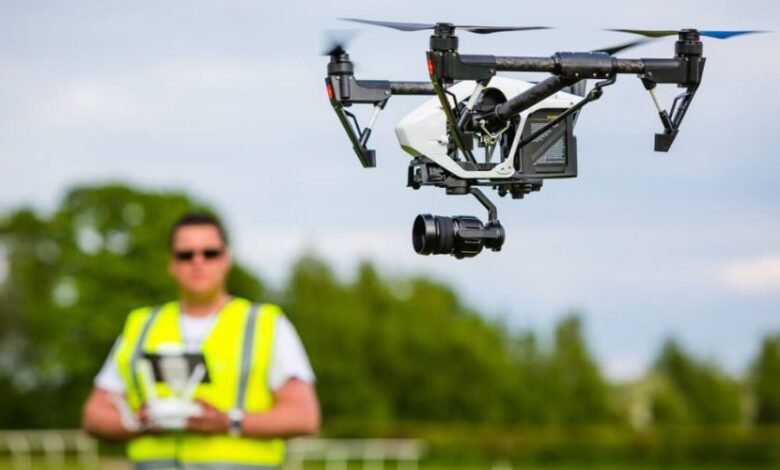Ever Wondered How Golf Drones Can Elevate Your Course Management?

Golf courses require meticulous management to ensure optimal playing conditions and a memorable experience for golfers. From maintaining the greens to monitoring course traffic, managing a golf course involves numerous tasks that can be time-consuming and labor-intensive. However, with advancements in technology, the integration of drones into course management practices has revolutionized the way golf courses are operated and maintained.
Introduction to Golf Drones
Golf drones, also known as UAVs (Unmanned Aerial Vehicles) or RPAS (Remotely Piloted Aircraft Systems), are unmanned aerial vehicles equipped with various sensors and cameras. These drones are specifically designed to assist in the management and maintenance of golf courses.
Benefits of Using Golf Drones
Increased Course Management Efficiency
One of the primary benefits of using golf & gadgets in USA drones is the significant increase in course management efficiency. Drones can quickly survey the entire course, providing detailed aerial views that enable groundskeepers to identify areas that require attention, such as turf diseases, irrigation issues, or damage from wildlife.
Enhanced Course Maintenance
Golf drones allow for more precise and targeted maintenance activities. By providing real-time data on turf conditions, water distribution, and vegetation health, drones enable groundskeepers to make informed decisions regarding fertilization, pest control, and irrigation scheduling, leading to healthier and more vibrant course conditions.
Improved Player Experience
The use of drones can also enhance the overall player experience. By ensuring that the course is well-maintained and visually appealing, drones contribute to the enjoyment of the game for golfers. Additionally, drones can be used to monitor course traffic and the pace of play, helping to prevent congestion and delays.
Types of Golf Drones
There are several types of golf drones available, each with its own set of features and capabilities tailored to specific management needs.
Mapping Drones
Mapping drones are equipped with high-resolution cameras and GPS technology, allowing them to capture detailed aerial images of the course. These drones are used to create accurate maps and 3D models, which can be used for course planning, design, and maintenance purposes.
Surveillance Drones
Surveillance drones are equipped with advanced sensors and cameras capable of capturing high-definition video footage. These drones are used for security purposes, allowing course managers to monitor for unauthorized access, vandalism, or other safety concerns.
Delivery Drones
Delivery drones are designed to transport small items such as golf balls, beverages, or snacks across the course. These drones can help improve customer service by delivering goods directly to golfers on the course, reducing wait times at refreshment stands.
Features to Look for in Golf Drones
When selecting a golf drone, there are several key features to consider to ensure optimal performance and functionality.
Range and Battery Life
Choose a drone with sufficient range and battery life to cover the entire course without needing frequent recharging or battery swaps.
GPS Capabilities
GPS-enabled drones provide accurate positioning data, allowing for precise navigation and mapping of the course.
Camera Quality
Opt for a drone with a high-resolution camera capable of capturing detailed images and videos for analysis and documentation purposes.
Durability and Weather Resistance
Select a drone that is ruggedly built and weather-resistant to withstand the rigors of outdoor use in varying environmental conditions.
Best Practices for Utilizing Golf Drones
To maximize the benefits of golf drones, it is essential to follow best practices for their deployment and operation.
Proper Training and Certification
Ensure that staff members responsible for operating drones receive adequate training and certification to operate the equipment safely and effectively.
Maintenance and Upkeep
Regularly inspect and maintain drones to ensure they remain in optimal working condition. Clean and calibrate sensors, check battery health and perform software updates as needed.
Integration with Course Management Software
Integrate drone data with existing course management software systems to streamline data analysis and decision-making processes.
Case Studies: Successful Implementation of Golf Drones
Example 1: XYZ Golf Club
XYZ Golf Club implemented a fleet of mapping drones to monitor turf conditions and irrigation efficiency. By analyzing aerial data collected by drones, the groundskeeping team was able to reduce water usage by 20% while improving turf health and playability.
Example 2: ABC Golf Resort
ABC Golf Resort utilizes surveillance drones to enhance security and guest safety. Drones patrol the course perimeter and monitor for intruders, vandalism, and other security threats, allowing staff to respond quickly to potential incidents.
Future Trends in Golf Drone Technology
As technology continues to advance, several trends are shaping the future of golf drone technology.
AI Integration
Integration of artificial intelligence (AI) algorithms into drone systems enables automated data analysis and decision-making, further enhancing course management efficiency.
Automation of Tasks
Automation features such as autonomous flight modes and programmable missions streamline drone operations, reducing the need for manual piloting and oversight.
Environmental Monitoring
Advanced sensors and imaging technologies enable drones to monitor environmental factors such as soil moisture, temperature, and vegetation health, helping to identify and mitigate environmental risks to the course.
Challenges and Limitations
Despite their numerous benefits, golf drones also face several challenges and limitations that must be addressed.
Regulatory Restrictions
Regulatory restrictions imposed by aviation authorities limit the use of drones in certain areas or under specific conditions, requiring compliance with airspace regulations and licensing requirements.
Privacy Concerns
Privacy concerns regarding drone surveillance and data collection may arise, requiring transparent policies and procedures for drone operation and data management.
Technical Issues
Technical issues such as signal interference, GPS inaccuracies, and mechanical failures can impact drone performance and reliability, necessitating ongoing maintenance and troubleshooting.
Conclusion
In conclusion, golf drones offer a myriad of benefits for course management, including increased efficiency, enhanced maintenance practices, and improved player experiences. By leveraging advanced technology and innovative solutions, golf courses can optimize their operations and provide an unparalleled golfing experience for enthusiasts.



